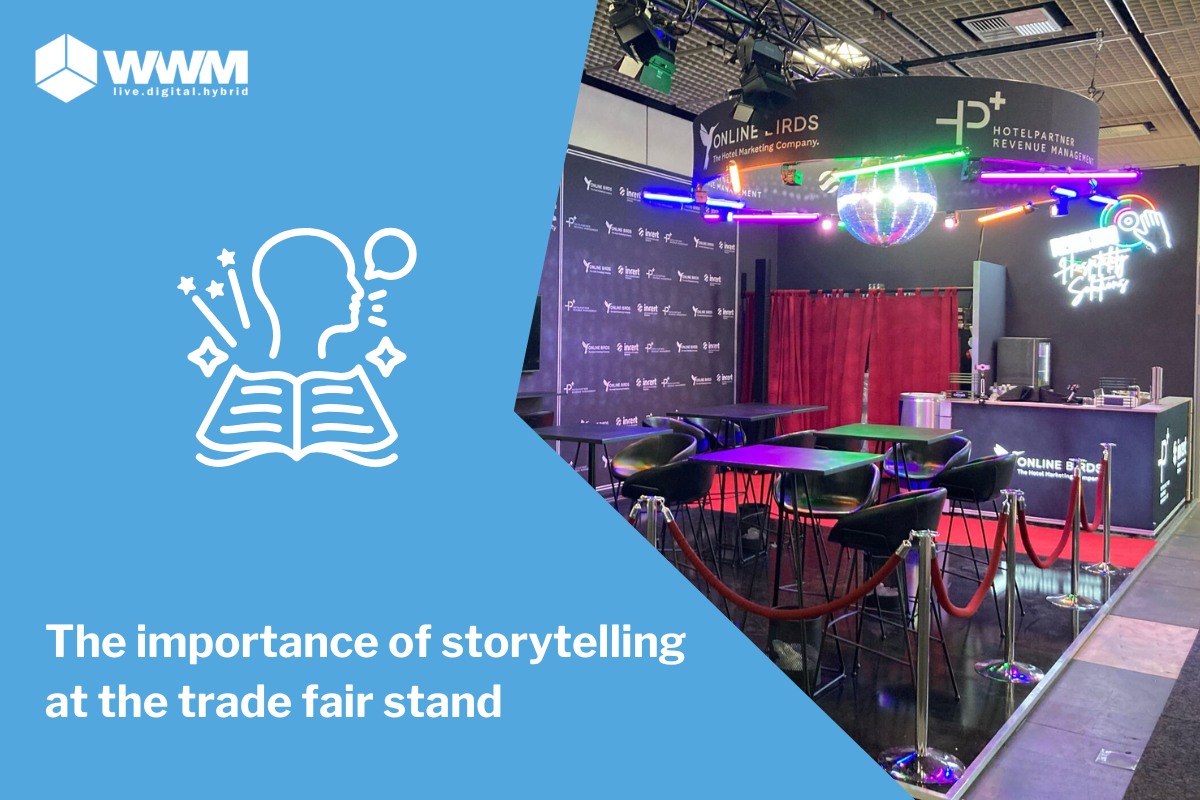8 ways to attract more visitors to your stand
The wait is over. The big day has finally arrived and the trade fair, where you are also represented with your fantastic exhibition stand, is finally...

Trade fairs offer an excellent opportunity for companies to present their products and services to a wide audience. One aspect that is often underestimated is the role of employees as brand ambassadors. They are the face of your company and their interaction with trade fair visitors can have a significant impact on the success of your trade fair presence. In this article, we will show you detailed strategies for training your employees so that they can act as effective brand ambassadors. We provide comprehensive tips on dress, behaviour, conversation and relationship building.
The preparation of your employees is like the foundation of a building - it forms the basis for the success of your trade fair appearance. But what does thorough preparation look like in detail? Here we take a look at the most important steps that will help you to optimally prepare your employees for the upcoming trade fair.
Before your employees go to the trade fair, it is crucial that they understand your company's objectives and strategies for this particular event. What do you want to achieve with your trade fair presence? Do you want to win new customers, strengthen existing customer relationships or raise awareness of your brand? By setting clear goals for your employees and explaining the strategies that will be used to achieve these goals, you will create a clear focus and motivation.
Here are the key steps in detail:
In order to be able to answer trade fair visitors' questions confidently and present your products or services convincingly, your employees need in-depth product knowledge. Through intensive training, your employees should not only understand the technical details of the products, but also have internalised their advantages and possible applications. They should be able to explain to potential customers why your products or services are the best solution for their needs.
Theory is important, but practice makes all the difference. Through role plays and practical exercises, you can ensure that your employees are able to effectively implement what they have learnt.
This way, your employees can build confidence and be better prepared for actual interactions with trade fair visitors.
Thorough preparation of your employees is the key to success at trade fairs. By making sure they understand the objectives and strategies of the show, providing them with in-depth product knowledge and giving them the opportunity to apply what they have learnt through role-play and practice exercises, you can ensure they are as prepared as possible for the upcoming show.

A professional appearance is crucial when it comes to making the right impression at trade fairs. Not only is it important that your staff are well informed and present themselves well, but it is also important that their appearance reflects the values and style of your organisation. Here are some detailed tips on how to ensure that your employees look professional at trade fairs:
A standardised dress code not only conveys uniformity, but also strengthens your brand identity. By setting a clear guideline for dress, you can ensure that your employees appear as part of a team while representing your organisation's values and culture. Integrating company colours and logos into your employees' clothing is another important aspect that helps to strengthen brand identity. By integrating your corporate design into the clothing, you can ensure that your employees are recognisable as representatives of your company at first glance. This not only creates recognition value, but also emphasises the authenticity and credibility of your brand.
A well-groomed appearance is just as important as the choice of clothing. Your employees should ensure that they always make a professional and tidy impression. In addition to clean clothing, this also includes appropriate personal hygiene.
A professional appearance of your employees at trade fairs is an important part of your brand presence and can be instrumental in making a positive impression on potential customers. By establishing a standardised dress code, incorporating your corporate design and ensuring appropriate grooming, you can ensure that your employees make the most of this opportunity and represent your company successfully.

In the hectic atmosphere of a trade fair, your employees' non-verbal signals can make all the difference to how visitors perceive your company. It's not just about what your employees say, but also how they say it and the body language they use. Here are some detailed behavioural rules your employees should follow to make a positive impression:
The posture of your employees also sends out important signals.
Gestures can support communication or even outstrip it
By mastering these rules of behaviour and applying them in their interactions with trade fair visitors, your employees can help to create a positive and welcoming atmosphere at the stand and gain the trust of potential customers. Ultimately, it is the combination of verbal and non-verbal signals that makes a trade fair presentation successful.

One of the key skills that your employees should master at trade fairs is effective dialogue management. After all, it is ultimately the way they interact with potential customers that will determine whether or not a lasting relationship is formed. Here are some detailed tips on how your staff can excel in the art of conversation:
A conversation at a trade fair should not be a monologue, but a genuine dialogue based on mutual respect and interest.
At a trade fair, there is often not much time to convey complex information.
Effective conversation at trade shows takes practice and tact, but with these detailed tips, your staff can ensure that their interactions with visitors are not only informative, but also enjoyable and memorable.

Trade fairs are not just about presenting products and services, but also about building and maintaining relationships. The key is to build long-term connections with potential customers, business partners and other exhibitors. Here are some detailed strategies on how to make these relationships successful:
After the show is before the follow-up. It is crucial to ensure that all contacts made are actively followed up. A quick thank you email or a personal phone call can make a lasting impression and show that you are taking their interest in further collaboration seriously. But that's just the beginning. The real art lies in fine-tuning the follow-up process:
A trade fair offers a wealth of opportunities for networking. It's not just about exchanging business cards, but also about making real connections and deepening existing relationships. Active participation and targeted networking are key:
In today's digital world, social media also plays an important role in building relationships at trade fairs. Use the power of social media to maintain your contacts online and keep your company in people's minds for the long term:
Overall, building relationships at trade fairs is an art that requires time, commitment and attention. Targeted strategies for follow-up, networking and social media can create long-term connections that last beyond the trade fair. These relationships can generate not only short-term business opportunities, but also long-term partnerships and referrals. Through continuous and authentic relationship management, you can gain the trust of potential customers and position your company as a reliable partner.

Your employees are a decisive factor for the success of your trade fair appearance. With targeted training and preparation, they can become effective brand ambassadors who represent your company professionally and convincingly. With the right strategies for dress, behaviour, conversation and relationship building, you can ensure that your trade fair appearance is a complete success. Invest in the training and preparation of your employees, as they are the key to a successful trade fair appearance and long-term business success.
.jpeg)
The wait is over. The big day has finally arrived and the trade fair, where you are also represented with your fantastic exhibition stand, is finally...

Storytelling is more than just a buzzword in marketing - it's a powerful strategy that enables brands to communicate with their target audience in an...

This is how the perfect trade fair stand should be. Large, a gigantic counter, a catering area, lots of LED video walls, bright colours. The main...